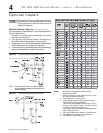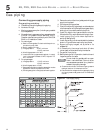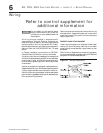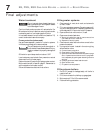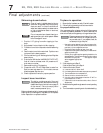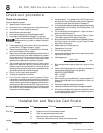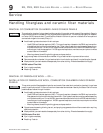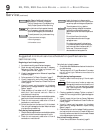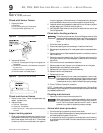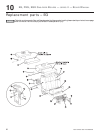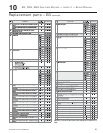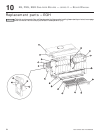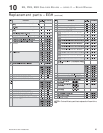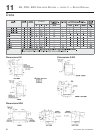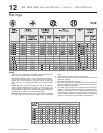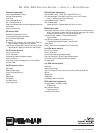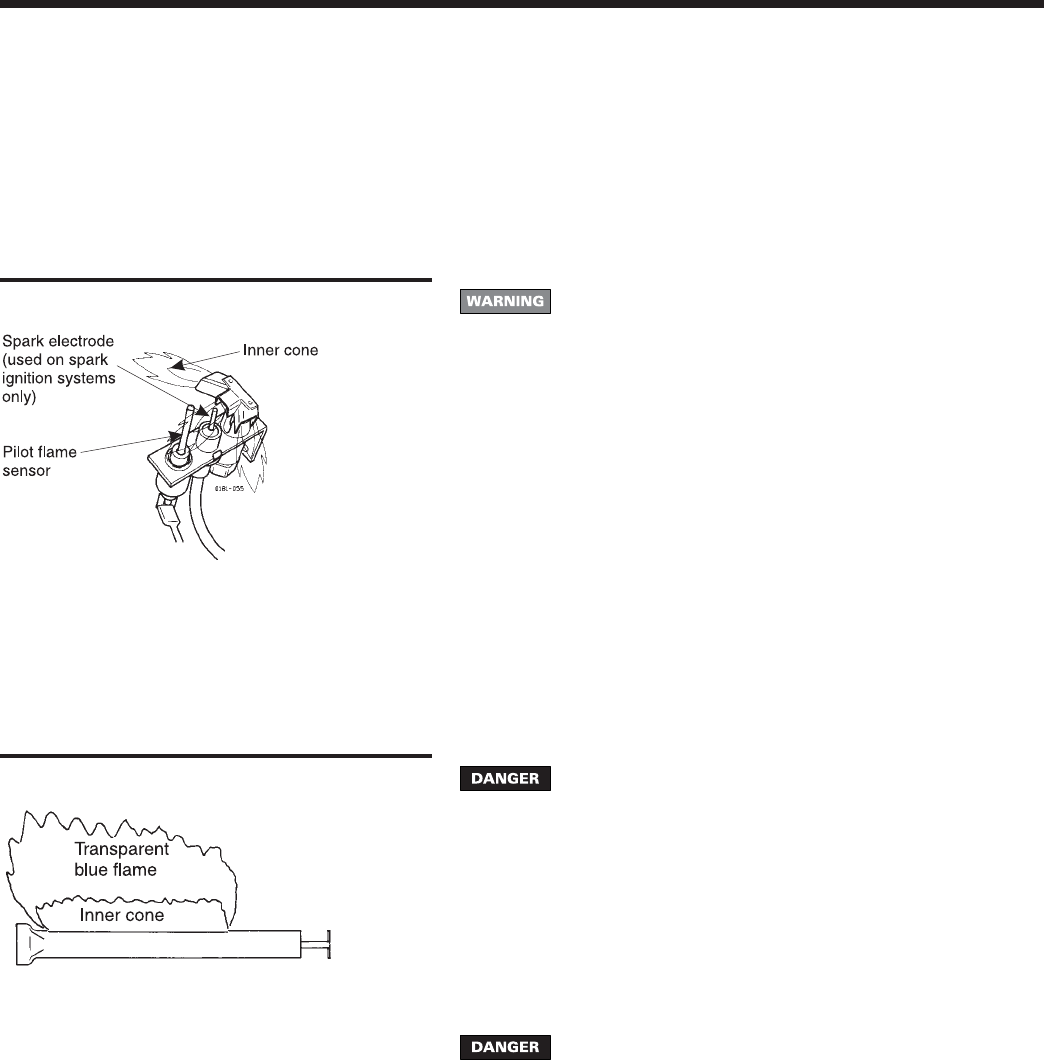
Part Number 550-110-639/0703
21
EG, PEG, EGH GAS-FIRED BOILERS — SERIES 4 — BOILER MANUAL
Check pilot burner flames
1. Proper pilot flame
a) Blue flame.
b) Inner cone engulfing pilot flame sensor.
c) Pilot flame sensor glows cherry red.
Service
(continued)
9
functioning properly. If flame blows out or flickers drastically, vent system
must be checked for obstructions or other causes of improper venting.
2. Inspect all parts of venting systems for deterioration from corrosion, physical
damage, sagging, etc. Correct all conditions found.
3. Verify damper is open when burner ignites. For additional information, see
Control Supplement.
Clean boiler heating surfaces
The boiler contains ceramic fiber and fiberglass materials. Use
care when handling these materials per instructions on page 19 of
this manual. Failure to comply could result in severe personal
injury.
1. Follow shut-down procedure
2. Disconnect breeching and remove damper (if used) and draft hood.
3. Remove upper rear jacket panel. Turn back jacket insulation to expose collector
hood.
4. Remove collector hood. Clean excess boiler cement from collector hood and
cast iron sections.
5. Remove burners from base of boiler. Follow “Cleaning main burners” to
thoroughly clean burners. Place newspaper in base of boiler to collect soot
that will fall.
6. With a wire flue brush, clean between the sections.
7. Remove paper and soot. Vacuum or brush base and surrounding area.
8. Replace collector hood. Seal with boiler cement.
9. Replace draft hood, damper (if used) and breeching.
10. Replace insulation and jacket panel.
11. Replace main burners.
When replacing, burner tubes must be seated in slots in back
burner support with openings face up. Gas orifices must inject
down center of burner. Failure to properly seat burners will result
in severe personal injury, death or substantial property damage.
12. Follow “To Place in Operation” procedure.
NOTE: Excessive sooting indicates improper gas combustion. Call a qualified
service agency or your local gas utility to check for proper combustion and make
any necessary adjustments.
Cleaning main burners
1. Vacuum or brush burners to remove dust and lint.
When replacing, burner tubes must be seated in slots in the back
with openings face up. Gas orifices must inject down center of
burner. Failure to properly seat burners will result in severe
personal injury, death or substantial property damage.
Annual shut-down procedure
1. Follow correct lighting/operating instructions on boiler.
2. Do not drain system unless exposure to freezing temperatures will occur. If
antifreeze is used with system, do not drain.
3. If complete boiler and piping system must be drained to avoid freezing,
provide method to drain water from both ends of boiler at or below return
tapping level.
Figure 24 Typical pilot burner flame
Figure 25 Typical main burner flame
2. Improper pilot flame.
a) Overfired - flames large and lifting or blowing past pilot
flame sensor.
b) Underfired - flame small; pilot flame sensor not engulfed
by inner cone.
c) Lack of primary air - flame tip yellow.
d) Pilot flame sensor not heated properly.
Check main burner flames
1. Proper burner flame - Yellow-orange streaks may
appear - caused by dust.
2. Improper flame:
a) Overfired - Flames large.
b) Underfired - Flames small.
c) Lack of primary air - Yellow tipping on flames; sooting
will occur.
Inspect venting system
1. Check venting system at least once a month during
heating season. With boiler firing, hold candle or match
below lower edge of draft hood “skirt”. If flame does
not blow out, but burns undisturbed, vent system is



